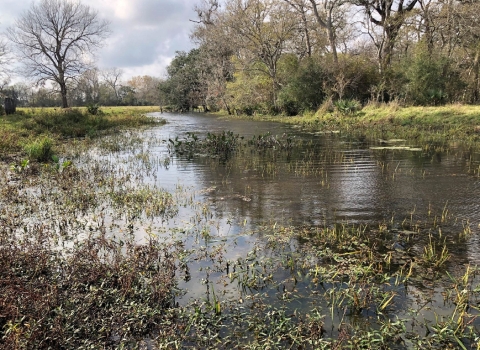For grizzlies in the Greater Yellowstone Ecosystem, connecting to larger populations of bears in the West is key to long-term survival.
Biologists at Red Rock Lakes National Wildlife Refuge in southwest Montana are working with landowners and partners to ease the bears’ passage while reducing causes of human-bear conflict. The effort to improve human acceptance of grizzlies near the refuge will receive funding this year as part of the U.S. Fish and Wildlife Service’s (Service) Cooperative Recovery Initiative (CRI).
The grizzly project is one of 16 across 27 states being funded through the CRI to help recover threatened or endangered species on or near national wildlife refuges. Besides the Yellowstone grizzly, species to benefit from this year’s $6.86 million in CRI funding include piping plover, freshwater mussels and bull trout.
Since 2013, the Service has funded 57 projects through the CRI totaling $23.2 million. Other species that have benefited include the Sonoran pronghorn, red-cockaded woodpecker and roseate tern. These projects often provide related conservation benefits to other imperiled species and encourage partnerships with state and private groups.
Red Rock Lakes Refuge manager Bill West called the Grizzly Bear Aware funding “great news.” The funding, he said, “will help sustain programs we’ve already begun. Environmentalists and ranchers have a shared interest in reducing human-grizzly conflict. Ranchers don’t want their livestock to be eaten, and we don’t want bears killed because they’re causing problems.”
Ranchers in southwest Montana’s Centennial Valley have a stake in the grizzly project. Bears can kill cattle, increasing the potential need to remove a bear from the population. To better protect property and livestock, valley residents developed the Range Rider program.
Begun two years ago by the refuge, The Nature Conservancy and Centennial Valley Association, a local landowners’ group, the program employs three Range Riders to monitor the location of livestock and large carnivores — bears, wolves and mountain lions. Range Riders advise private landowners when to move their herds to avoid run-ins with these animals. They also alert landowners, who often live 40 or more miles away, to remove sick or injured cattle so these don’t invite predation. Some of the CRI project funding will help sustain the Range Rider program.
Biologists also aim to curb bears’ access to human-associated food sources by removing animal carcasses, fencing off aviaries and securing food and refuse. Project partners plan to distribute 60 bear-proof garbage containers to ranchers and homeowners, install 30 hunted game storage poles in campgrounds and hunting camps and supply 10 bear-proof food storage containers at campgrounds. Signs and kiosks will also warn hikers and campers to carry bear spray and secure their food from bears.
West was optimistic such actions would change behaviors — human and bear. “The bears are very capable of adapting to whatever landscape they have, as long as they don’t get into catastrophic encounters,” he said. “Valley communities are fairly tolerant of occasional loss; they lose cattle to disease, to drowning, to all kinds of things. What we don’t want is for the grizzlies to develop a business model of preying on livestock. We want to prevent them from going down that road. I think we can accomplish that. I think the community is coming to believe that, too. ”
The grizzly is one of the largest North American land mammals. Even its Latin name — Ursus arctos horribilis — conveys the awe it commands. Males can weigh 400 to 600 pounds, females somewhat less. The animal’s thick brown fur often looks frosty at the tips: hence the name grizzly. A grown bear can run at up to 35 miles per hour for short distance.
Before European settlement, grizzlies roamed much of western North America. Grizzlies were persecuted out of fear and as part of the organized effort to eliminate predators. By the 1930s to 1975 they remained in only 2 percent of their historic range in the lower 48 states.
The grizzly bear was listed as threatened under the Endangered Species Act in 1975 when there were as few as 136 bears. The Yellowstone grizzly bear population has rebounded to more than 700 today. The species has remained stable in the Greater Yellowstone Ecosystem for more than a decade as a result of the Service’s recovery efforts, and in March 2016, the Yellowstone grizzly was proposed for delisting.
The Greater Yellowstone Ecosystem population is isolated genetically from grizzly populations to the north and west. There are currently no genetic problems with the Yellowstone area grizzly population. Reconnecting the Yellowstone population with other grizzly populations is a positive and proactive conservation action that will assure that genetic issues will never threaten this population.
For more information on the 2016 projects and previous years, please visit: http://www.fws.gov/refuges/whm/cooperativeRecoveryInitiative.html.

